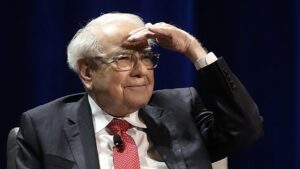Don’t put it all on black: the money managers’ warning for 2020

Pic: DKosig / iStock / Getty Images Plus via Getty Images
In recent years Christmas has been celebrated by an abundance of investment calls advising the ‘guns and canned food’ strategy: next year will be scary, batten down the hatches.
But after a year of superlative share market growth in an economy that, by any measure, is struggling for air, this year economists and the money people are divided over what the coming months will look like.
The RBA’s rate cuts and repeated mentions of quantitative easing (QE) show it’s preparing to defend against an economic recession.
But if Australia does fly close to recession and the RBA pulls out the big guns, it’ll be great for shares as people look for returns to beat piddling deposit rates and as newly-created money is flushed into the economy.
The short story that money managers are telling investors is fly to quality — companies with plenty of money, high return on equity and solid earnings — and to be aware that experienced investors’ crystal balls are starting to flash red.
The longer story is more complex.
The numbers aren’t sexy
The inverted US bonds yield curve is freaking people out.
An inverted yield curve happens when interest rates paid by short-term bonds are higher than interest rates on long-term bonds. It means people are jumping into long-term, safer investments because they’re worried about the near-term future.
“The yield curve is the best predictor that we have of economic troubles to come,” Stephen Anthony, chief economist for Industry Super Australia, said at the Allfin Investment Summit last week.
“All instances of yield curve inversion in the United States since the second world war have led to a financial market meltdown, and also eventually to an economic slowdown or recession. So when you see yield curve inversion you start getting nervous.”
He believes returns on investments over the next decade will be mediocre.
The numbers making people nervous are US manufacturing contracts, which hit a nadir in October and are now being followed by services.
FIIG chief investment strategist Jonathan Sheridan believes there’s another six to 12 months of worsening data ahead of us, and the US Federal Reserve will “capitulate in the face of declining data”.
In Australia, the economy grew 1.7 per cent this year, largely due to government spending and as the impact of interest rate cuts flow through. Royal Bank of Canada analysts reckon it’ll grow by 2.4 per cent next year, the RBA says 3 per cent.
And while Stephens believes a lot of the world’s economic stimuli of monetary policy and demographic booms are “worn out”, Australia has a hitherto unused weapon — QE — and the government, while it hasn’t abandoned its dream of a surplus, is beginning to offer some fiscal stimulus to keep the country ticking along.
Too big to fail
The government has brought forward $3.8 billion worth of infrastructure spending, with about half to come in the next 18 months to counter lukewarm growth (savings are coming from $1.5 billion in cuts to the federal public sector).
Over at the RBA, governor Philip Lowe said in November QE would become an option once the cash rate hit 0.25 per cent.
It’s currently at 0.75 per cent and it’s widely expected the central bank will cut again in early 2020.
But even as Lowe has been warming the waters for recession-busting tactics, he’s also talking up the economy, saying at the last rates decision the Australian economy “appears to
have reached a gentle turning point” thanks to low rates, tax cuts, infrastructure spending, the upswing in housing prices and a brighter outlook for the resources sector.
READ: The RBA is playing the ‘waiting game’ because it thinks its rate cuts are working: economist
State Street head of portfolio management, Bruce Apted, told Stockhead that launching QE would imply that the outlook for growth, employment and inflation, which is now around a low 1.7 per cent, had deteriorated.
Wealth Within senior investment analyst Janine Cox says the RBA can really only cut the cash rate twice more by a further 0.25 per cent to have an impact on the economy.
“After that there is little point in making a future cut given there will be no real impact,” she told Stockhead.
Royal Bank of Canada analyst Su-Lin Ong expects a $40 billion bond-buying program to start in early 2021.
Ride it like you stole it
The fallout from the RBA prepping society for unconventional recession-fighting tactics and a government finally realising economic growth is a problem, is joy among equity investors.
Wealth Within’s Cox says the three cash rate cuts in 2019 have already driven the stock market to new all time highs. The All Ordinaries was up 21 per cent for the year-to-date on Wednesday.
“Generally, news about any stimulus drives stock prices higher and typically the gains occur six months in advance of cuts to the cash rate or any other stimulus program,” she said.
“By mid-2019 most of the gains in stock prices were realised as the market rose by around 17 per cent with only one cut having occurred at that point.
“My analysis has indicated that before talk of a QE program starting that the market will continue to make new all-time highs.”
And if the economy grows and the RBA doesn’t need to inject more stimulus, that may mean the heated stock market performance seen over the last 18 months begins to be backed by earnings.
Apted wrote in a note last week that while ongoing RBA support will be good for equities, investors should expect “increasingly stretched valuations as fundamentals disconnect from returns”.
‘Be careful’
Even as the outlook for the ASX looks almost rosy — boosted by the RBA if the economy slumps or backed by the economy if it improves — fund managers are warning investors to be cautious.
FIIG’s Sheridan is pessimistic about the state of the global economy, while Ellerston Capital CIO Chris Hall believes that as US investors rush to safety in long-term bonds, they will rush out of riskier equities and that’ll pull down elevated share prices.
“To me what that means is that next year in 2020 we’re going to see a lot more subdued returns in both the equity and the bond market,” Hall said at the Allfin conference last week.
Hall says international stimulus, including the US Fed’s three rate cuts this year and a fresh €20 billion ($32.4 billion) from the European Central Bank in September, will keep flowing into equities for the next three to four months, benefiting Asian export markets such as South Korea, Singapore and China.
After that investors will get defensive and there will be a flight to safer assets and markets in the US and Europe.
State Street’s Apted says if the outlook for growth deteriorates, more stable defensive sectors will attract premiums and outperform cyclical sectors.
Industry Super’s Anthony says corporate earnings can’t outrun the economy they’re based in, so eventually they will revert back to “something like a nominal GDP-like return” — although it may take a decade or two.
But not everyone is doom-and-gloom: Betashares cofounder Ilan Israelstam says the world is in a later stage bull market with a US president who uses the S&P 500 as a popularity contest.
“We are cautiously optimistic,” he said last week.
“If you’re going into an election in November 2020 and you’ve got a popularity contest indicator, you will do everything in your power to make sure that that particular issue is not an issue going into an election.”
He’s picking Asia, emerging markets and tech stocks as his late stage bulls
Related Topics
UNLOCK INSIGHTS
Discover the untold stories of emerging ASX stocks.
Daily news and expert analysis, it's free to subscribe.
By proceeding, you confirm you understand that we handle personal information in accordance with our Privacy Policy.








